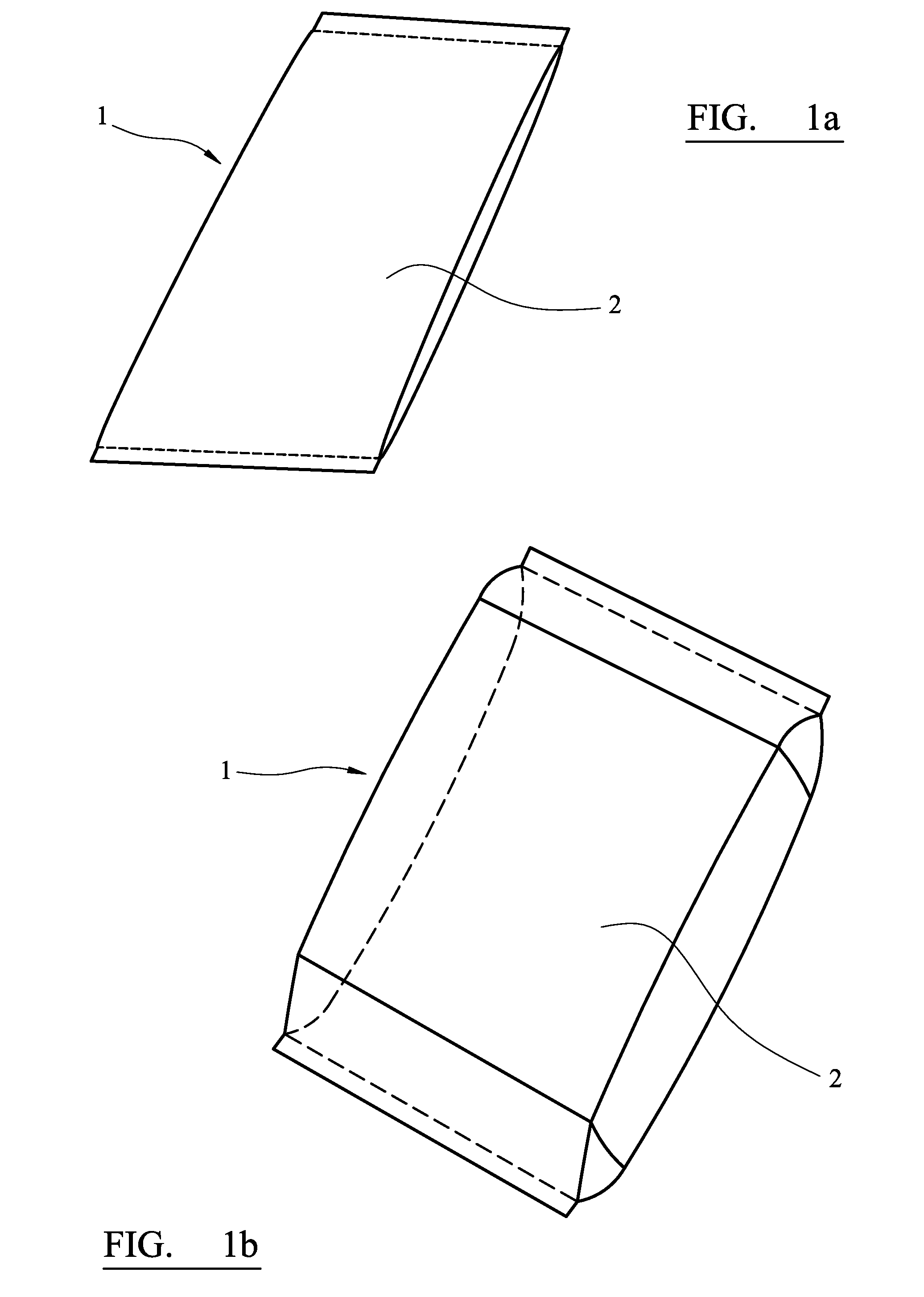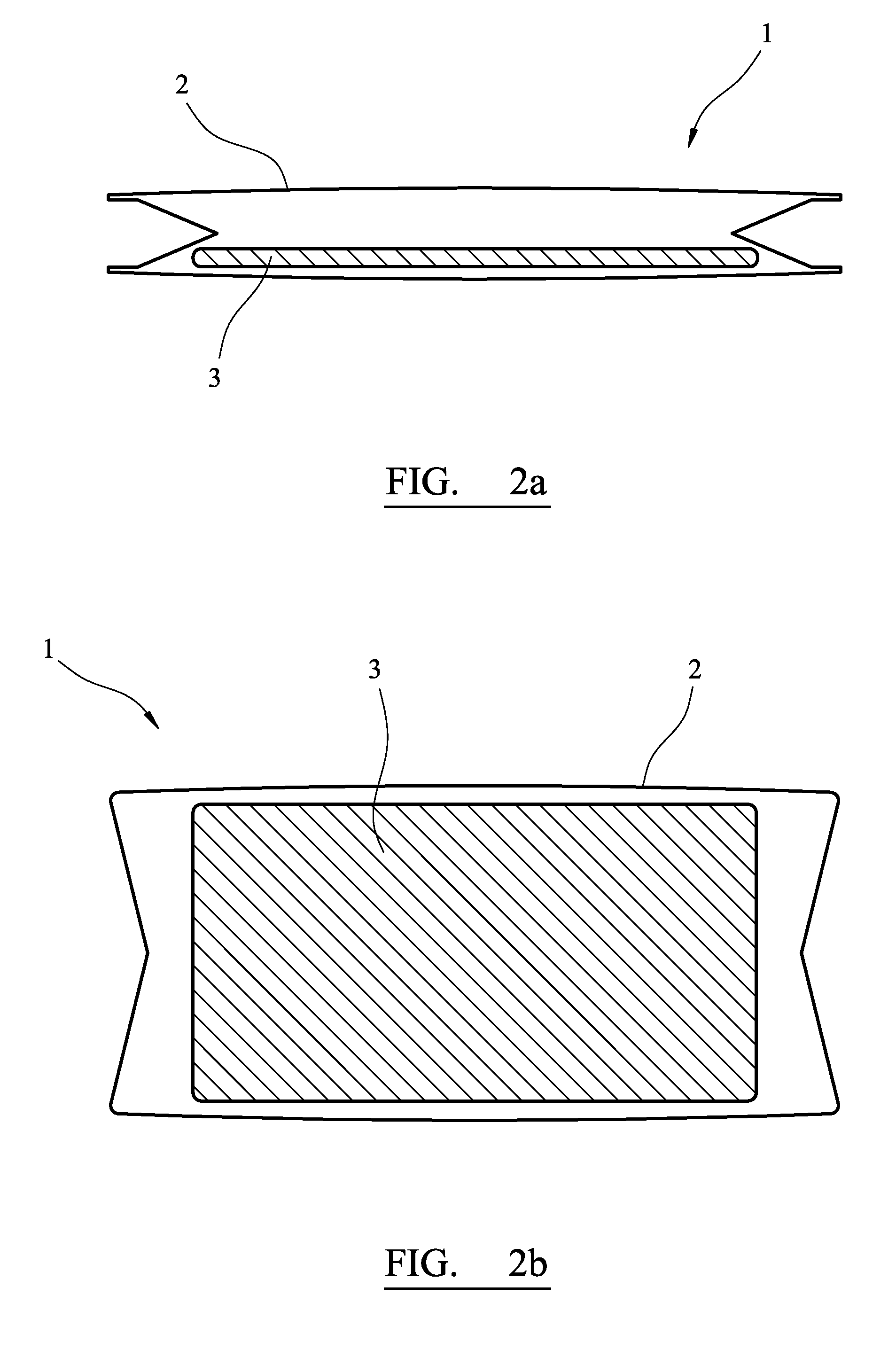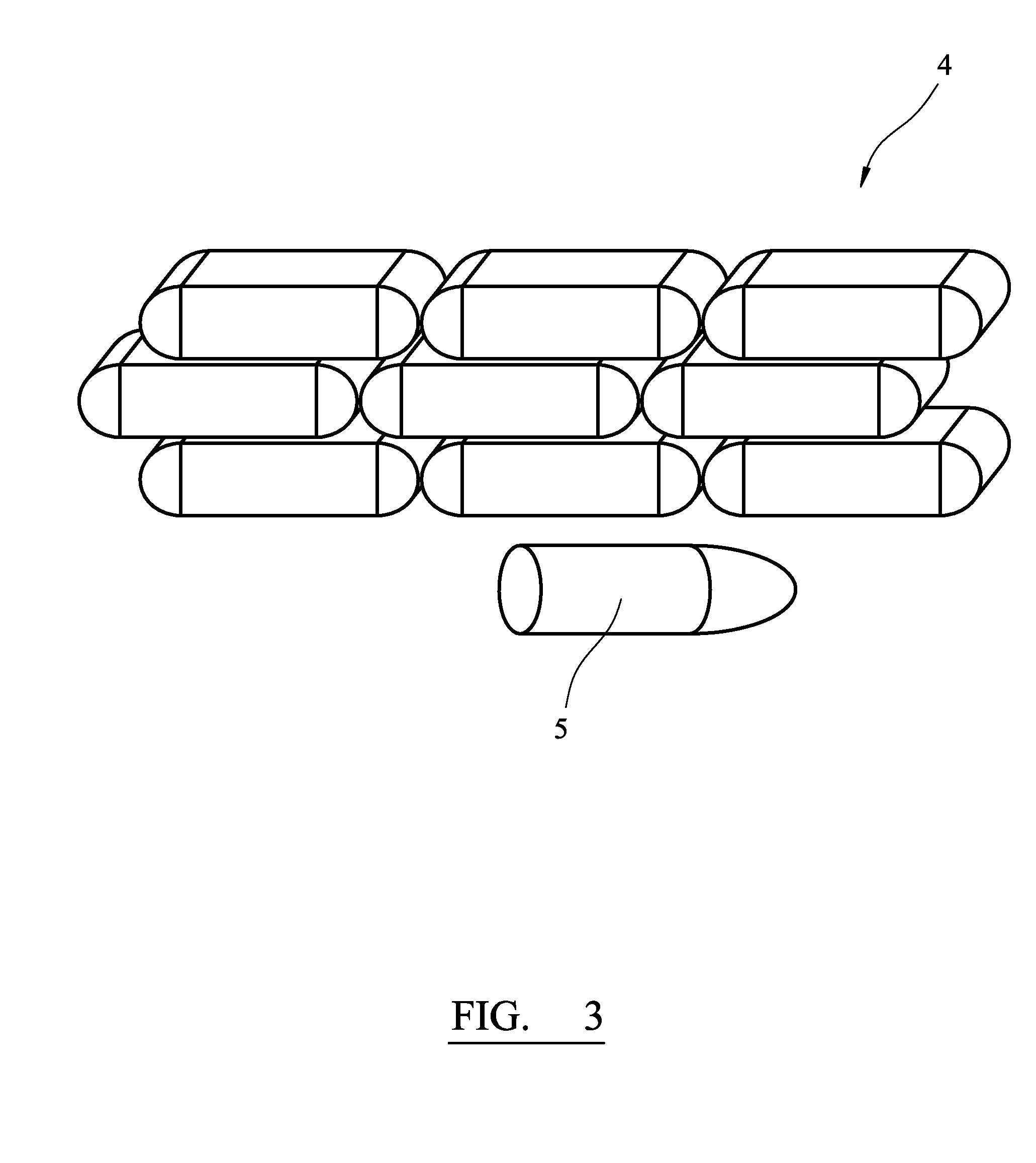Defence system
a technology of sandbags and barriers, applied in the field of sandbags as a barrier, can solve the problems of increasing the cost of construction, increasing the number of bags, etc., and reducing the amount of time. , the effect of reducing the number of bags
- Summary
- Abstract
- Description
- Claims
- Application Information
AI Technical Summary
Benefits of technology
Problems solved by technology
Method used
Image
Examples
Embodiment Construction
[0063]Referring to the drawings, the absorbent bag 1 includes an outer lining 2 comprising a material such as heavy duty absorbent paper and an absorbent sore 3.
[0064]The absorbent core 3 includes, absorbent crystals. As illustrated in FIG. 2a, these crystals have low volume when dry and so make the bag low in bulk for storage and transportation. When the bag 1 is saturated, the crystals absorb a large amount of fluid to form an absorbent gelling polymer capable to retaining fluid, such as water. This is illustrated in FIG. 2b where it is clear that the volume of the absorbent core 3 has significantly increased over the above and dry or unsaturated state. Preferably, the gelling polymer is able to retain the fluid even whilst underpressure from the weight of any bags which may be layered above. Absorbent crystals suitable for use in the absorbent core include, so-called super-absorbent polymers, including the product Super Absorbent Polymer™. Such crystals may include sodium polyacr...
PUM
 Login to View More
Login to View More Abstract
Description
Claims
Application Information
 Login to View More
Login to View More - R&D
- Intellectual Property
- Life Sciences
- Materials
- Tech Scout
- Unparalleled Data Quality
- Higher Quality Content
- 60% Fewer Hallucinations
Browse by: Latest US Patents, China's latest patents, Technical Efficacy Thesaurus, Application Domain, Technology Topic, Popular Technical Reports.
© 2025 PatSnap. All rights reserved.Legal|Privacy policy|Modern Slavery Act Transparency Statement|Sitemap|About US| Contact US: help@patsnap.com



